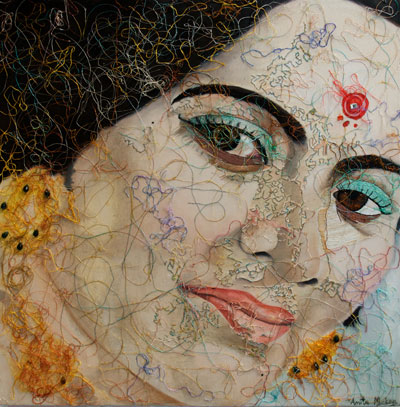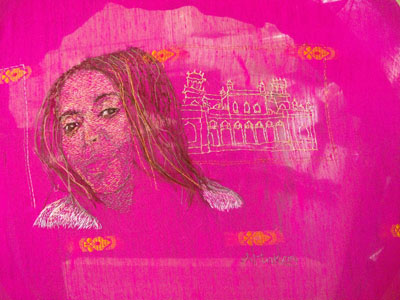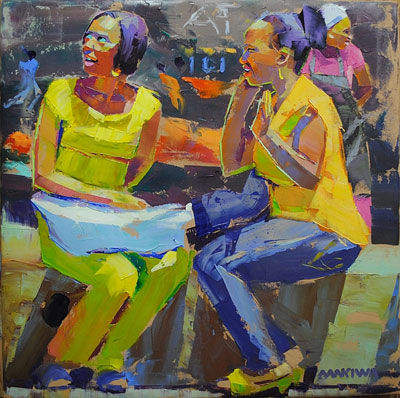A flock of birds at the Chowmahalla Palace in Hyderabad spun dizzy arcs across the overcast sky. Beneath them the dancing girls with chandeliers for earrings and buttons for noses were similarly coordinated. Their gold and green embroidered chaniya cholis were fiercely Indian, but the drums they stamped their feet to happened to be African.
Inside the fern-fenced courtyard of the palace, located at the crossroads of north and south India, the newly appointed South African high commissioner to India was the only black man for miles. Reverend Harris Majeke toyi-toyied his way through one part of his speech. “We are all African,” he announced, grinning at the audience of South Africans and Indians, who had gathered on July 31 to celebrate the unique cultural bridge between the two countries.
He was yet to learn that they were dancing to beat of the same drum. The girls who had welcomed Majeke to the palace moved their feet to rhythms tapped out by Siddis drummers, the descendants of slaves, sailors, servants and merchants from East Africa who settled in India from 1200AD to 1900AD — the lesser known counterpart to India’s own diaspora in Africa.
The 150th anniversary of the influx of Indians into South Africa as indentured labourers is being marked by a dazzling array of official celebrations in South Africa, officiated by diplomats and politicians. But a project called “A Cultural Bridge from Pretoria to Hyderabad”, a dream fulfilled by a South Africa-based journalist and sociologist, Hyderabadi Vidya Bhandarker, has proven to be the first of its kind in India.
The event, essentially a cultural and artistic exchange between Hyderabad and Pretoria, started this year. Bhandarker hopes her small idea will “take wings” over time with a free flow of ideas and people between the two places she now calls home.
Captivated
Bhandarker was captivated by the connections between the countries when her husband’s changing of jobs led her to move to South Africa in 2009. Too familiar with the religious wars in her home country, she was inspired by President Jacob Zuma’s inauguration ceremony, which included prayers by various faiths.
“I saw so much hope for the future of South Africa,” recalls Bhandarker. “I saw a Gandhian country — tolerance, patience, forgiveness and genuine bonhomie.”
A strong-willed woman gifted with the knack for easily inspiring people, Bhandarker marked this first event by compiling and launching a book of stories by South African Indians, and putting together an artist exchange programme housed at the ornate neo-classical Chowmahalla Palace in her hometown. But it was a long road to get there after her initial inspiration.
“I started talking up a storm with whomever I met in South Africa,” she says. After hunting for the right artists, she found two relatively new names on the scene: Pretoria-based Amita Makan and Zimbabwean Makiwa Mutomba. At Bhandarker’s urgings they paid their way to Hyderabad and spent a short artist residency at the palace, which also houses a museum and guest quarters.
“I arrived during the Monsoon season, the season associated with love, and I fell in love with the sights, flavours, sounds and the people of Hyderabad,” says Makan, who has already started to win plaudits for her delicate works combining photorealism and embroidery. “I spent a lot of time poring over centuries-old hand-embroidered garments worn by the [palace ruler] Nizam’s families over generations.”

‘My mother in doodles’ by Amita Makan
A fourth-generation South African Indian, Makan embroidered a self-portrait on a silk sari which once belonged to her mother, with an outline of the Chowmahalla Palace in the background that she displayed at the Cultural Bridge event. The work was a comment on her cultural identity.

Amita Makan’s self portrait
“I have a deep connection to India through my ancestors but I am rooted in my South African identity.”
‘India is an artist’s paradise’
For Mutomba, an oil-painter who started on the streets of Zimbabwe, it was the colours of the landscape that blew him away. “I think India is an artist’s paradise,” he says. “I will certainly go back.”

Fashionistas, by Makiwa Mutomba
His painting of Mahatma Gandhi, done in his characteristic style using a palette-knife to apply the paint, was an instant hit at the palace exhibition. (See article image above).
“I painted Ghandi just two days before I left for India and dried it with electric heaters. The story of Ghandi, like Mandela’s, is a very inspiring one. I truly admire both men. I decided to paint him as a gift to my hosts, the people of Hyderabad.”
In return, Indian artists will exhibit their work in Pretoria next month, along with Makan and Mutomba. The local versions of the exhibition will run from September 4 to 16 at the Pretoria Arts Association on Mackie Street, Pretoria.
Legendary Hyderabadi artist Aziz will showcase his semi-3D landscapes and portraits, using plaster of Paris moulded on to the canvas. “Aziz, our recluse, joined our Hyderabad show after a gap of 22 years,” says Bhandarker of the enigmatic artist. “A Gandhian and an admirer of Madiba, he has started painting especially for the exhibition in South Africa.”
And in a neat complement to Bhandarker’s work, the Indian government has launched the biggest edition of its annual Shared History festival, thanks to the 150th indentured labour anniversary. A celebration of food, music, theatre, photograph and more, the festival runs kicks on Friday and runs until the end of the month in Cape Town, Durban, Johannesburg and Pretoria.
“The government of India’s Shared Histories programme is working on relationships at the institutional level — mine is a citizen’s-level movement,” muses Bhandarker. “Both are essential efforts for success. After all, there is so much in common between the people of South Africa and India.”
Tickets for the Shared History festival can be booked through Computicket. For the full programme visit our special report: www.mg.co.za/150years.